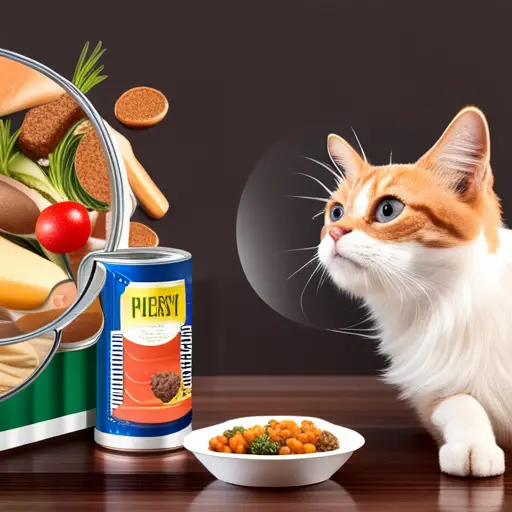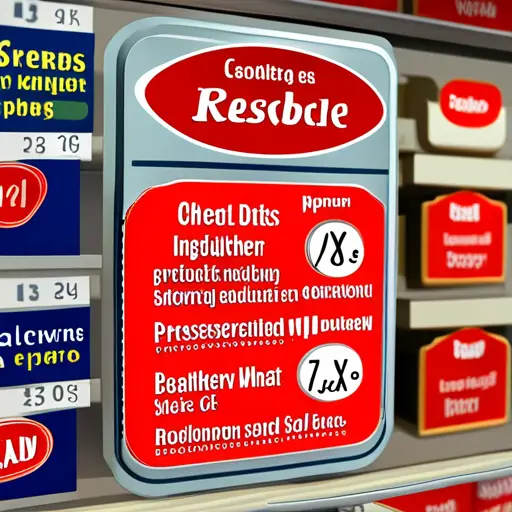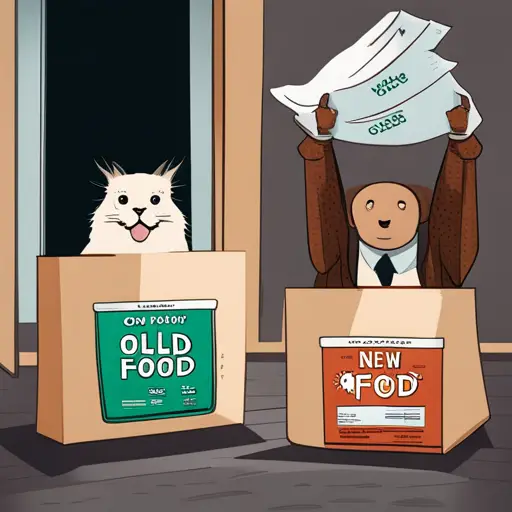You love your furry feline friend and you want to provide them with the best possible care, including their diet. But with so many options available on the market, it can be overwhelming to know what to choose.
That’s why it’s important to understand the importance of reading cat food labels and how it can benefit your cat’s health.
While it may seem like a simple task, reading cat food labels can actually be quite complex. It’s not just about choosing a brand or flavor that your cat enjoys. You need to pay attention to the ingredients, the nutritional value, and any potential allergens.
By taking the time to decode these labels, you can ensure that you are providing your cat with a well-balanced and nutritious diet that will keep them healthy and happy for years to come.
So, let’s dive into the world of cat nutrition and learn why reading cat food labels is so important.
Key Takeaways
– Understanding cat nutrition is crucial for preventing health problems such as obesity, urinary tract infections, and kidney disease.
– Look for high-quality protein sources as the first ingredient and avoid fillers, artificial preservatives, and by-products.
– Common cat food ingredients to avoid include artificial preservatives, fillers, by-products, and allergenic ingredients.
– Nutritional needs of kittens, adult cats, and senior cats differ significantly, and consulting with a veterinarian is important to ensure meeting all of a cat’s specific nutritional needs.
Understanding Cat Nutrition

Don’t let your furry friend suffer from a lack of proper nutrients – understanding cat nutrition is crucial for their health and happiness!
As a responsible pet owner, it’s your duty to provide your cat with a balanced and nutritious diet that meets their feline diet and nutritional requirements. A healthy diet can prevent a host of health problems, including obesity, urinary tract infections, and kidney disease.
Before you grab the first cat food you see on the shelf, take a moment to read the label. Understanding the ingredients and nutritional information can help you make informed decisions about what to feed your cat. Look for high-quality protein sources, like real meat, as the first ingredient.
Avoid foods that contain fillers, artificial preservatives, and by-products. Remember, a healthy cat is a happy cat, and a happy cat means a happy owner!
Decoding Cat Food Labels

You’ll need a magnifying glass to decode the hieroglyphics on the tiny print that covers the back of a cat food bag. But it’s imperative that you do so to ensure that you’re providing your feline friend with the best possible nutrition.
Label regulations vary from country to country, and while they may provide some basic information, it’s up to you to decipher the rest. Here are two sub-lists to help you decode cat food labels:
– Nutritional adequacy statement: This tells you whether the food is suitable for your cat’s life stage, such as kitten or senior. It also lets you know if the food is complete and balanced or if it’s intended for supplemental feeding only.
– Ingredient sourcing: Look for labels that list specific protein sources, such as chicken or salmon, rather than vague terms like ‘meat’or ‘poultry.’ This ensures that the food is made from high-quality sources, which will provide your cat with the necessary nutrients for optimal health.
Understanding cat food labels is crucial to ensuring that your feline friend gets the best possible nutrition. By paying attention to label regulations and ingredient sourcing, you can make informed decisions about what to feed your cat.
So next time you’re at the pet store, grab that magnifying glass and start decoding!
Common Cat Food Ingredients to Avoid

You should be aware of common cat food ingredients to avoid. These include artificial preservatives, fillers, and by-products, as well as allergenic ingredients. These additives are often used to enhance the flavor and texture of cat food, but they can have negative effects on your cat’s health.
By reading cat food labels and avoiding these ingredients, you can provide your furry friend with a nutritious and balanced diet.
Artificial Preservatives
It’s important to know the impact of artificial preservatives in your cat’s food, as they can potentially harm their health and well-being. Here are three reasons why you should avoid cat food with artificial preservatives:
– Health risks: Artificial preservatives like BHA, BHT, and ethoxyquin have been linked to cancer, allergies, and other health problems in cats.
– Long term effects: Feeding your cat food with artificial preservatives can have long term effects on their health, leading to chronic illnesses and a shorter lifespan.
– Consumer awareness: As a responsible pet owner, it’s your duty to be aware of what you’re feeding your cat. By reading cat food labels and avoiding artificial preservatives, you can ensure that your furry friend is getting the best nutrition possible.
Instead of relying on artificial preservatives, consider natural alternatives like vitamin E and rosemary extract. These natural preservatives are just as effective and don’t pose the same health risks as their artificial counterparts.
By making informed choices about your cat’s diet, you can help them lead a healthier, happier life. Remember, as a cat owner, you have the power to make a positive impact on your pet’s well-being.
Fillers and By-Products
Beware of cat food with fillers and by-products, as these ingredients are often made from low-quality, discarded animal parts that you wouldn’t want to eat yourself. These ingredients contain little to no nutritional value and are often added to cat food to reduce costs.
By-products can be anything from beaks and feet to intestines and organs, which aren’t fit for human consumption, let alone your feline friend. Identifying harmful additives and understanding the nutritional benefits of natural ingredients is key to selecting the right cat food for your furry friend.
Nutrient-rich foods, such as real meat, fruits, and vegetables, provide your cat with essential vitamins and minerals they need to stay healthy. Ingredients like corn, wheat, and soy are common fillers found in cat food, which don’t provide any real nutritional value and can cause digestive issues.
Be sure to read the labels carefully and choose cat food that’s made with natural ingredients that’ll benefit your cat’s overall health and well-being.
Allergenic Ingredients
Watch out for allergenic ingredients in your cat’s food. These ingredients can trigger allergies and other dietary restrictions in your furry friend.
Some common allergenic ingredients in cat food include grains, dairy, and certain types of protein. If your cat has a known allergy or sensitivity to any of these ingredients, it’s important to choose a cat food that’s free from them.
It’s also important to remember that not all cats have the same dietary needs. Some cats may require a special diet due to medical conditions or allergies. Always consult with your veterinarian to determine the best course of action for your cat’s dietary needs.
By reading cat food labels and being aware of allergenic ingredients, you can ensure that your cat is getting the best possible nutrition without any adverse reactions.
Tips for Choosing the Best Cat Food

When choosing cat food, it’s important to consider your cat’s age and life stage, health conditions, and personal preferences.
For example, kittens have different nutritional needs than adult cats, while senior cats may require specialized diets to support their aging bodies.
If your cat has a health condition, such as diabetes or kidney disease, their diet may need to be tailored to manage their condition.
Additionally, some cats may have personal preferences or sensitivities that should be taken into account when selecting their food.
Age and Life Stage
As your furry friend ages, it’s crucial to choose a cat food that meets their specific life stage needs. Your cat’s nutritional requirements change as they grow older, and your choice of food can greatly affect their overall health and well-being.
To ensure that your cat gets the right nutrients in the right amounts, it’s important to look for cat food labels that indicate dietary recommendations for their particular age and life stage.
When choosing cat food, keep in mind that the nutritional needs of kittens, adult cats, and senior cats differ significantly. Kittens require more protein, fat, and calories to support their growth and development, while senior cats need less of these nutrients to maintain their weight and prevent health problems.
By reading cat food labels carefully, you can make informed decisions about what to feed your cat at each stage of their life. Remember to consult with your veterinarian to make sure that you are meeting all of your cat’s specific nutritional needs.
Health Conditions
One key factor to consider when selecting a cat’s diet is their health conditions, as certain ingredients can aggravate or alleviate symptoms. For example, just like how a person with a gluten allergy should avoid wheat, a cat with urinary tract issues may benefit from a food with lower levels of magnesium.
Other health conditions that should be taken into account when choosing a feline diet include weight management, diabetes, and food allergies. It’s important to read cat food labels carefully and consult with a veterinarian to ensure that your cat’s dietary requirements are being met.
When it comes to your furry friend’s health, there’s no room for compromise. To keep them healthy and happy, make sure you’re feeding them the right food. Here are some emotional bullet points to keep in mind when selecting your cat’s food:
– You want your cat to thrive and live a long, healthy life.
– You don’t want to see your cat suffer from uncomfortable health conditions.
– You want to do everything you can to take care of your furry friend.
– You want to give your cat the best possible nutrition.
– You want your cat to feel loved and cared for.
Personal Preferences
Imagine being able to choose your cat’s food based on what they enjoy eating! Your furry friend’s personal preferences can play a big role in their diet, so it’s important to take their tastes into account when selecting their meals.
Some cats prefer certain flavors over others, just like humans. For example, your cat may prefer seafood flavors over chicken or beef. By paying attention to their preferences, you can ensure that they enjoy their meals and are more likely to eat the recommended portions.
In addition to taste preferences, some cats may also have brand loyalty. If you’ve been feeding your cat a certain brand of food for a while and they seem to enjoy it, it’s important to take this into consideration when choosing their meals. Switching brands abruptly can cause stomach upset and other digestive issues.
However, it’s always a good idea to read the labels and ensure that the brand you’re feeding your cat is providing them with the necessary nutrients for their health. By considering both your cat’s taste preferences and brand loyalty, you can provide them with a well-balanced and enjoyable diet.
Making the Switch to a New Cat Food

Switching to a new cat food can be exciting and beneficial for both you and your feline friend. However, it’s important to make the transition smoothly to avoid any digestive upsets or rejection of the new food. Introducing new flavors gradually and mixing the old and new food can help your cat adjust to the change.
To make the transition smoother, consider the following table:
| Day | Old Food | New Food |
|---|---|---|
| 1 | 75% | 25% |
| 2 | 50% | 50% |
| 3 | 25% | 75% |
| 4 | 0% | 100% |
By slowly decreasing the amount of old food and increasing the amount of new food over a period of 4 days, your cat can adjust to the new flavors and texture without any discomfort. Remember to also provide plenty of fresh water and monitor your cat’s behavior and appetite during the transition. With a little patience and care, your cat can enjoy a new and nutritious diet.
Conclusion
Now that you know the importance of reading cat food labels, you can confidently choose the best food for your furry friend. Understanding cat nutrition is key to ensuring your cat is healthy and happy. Take the time to decode the labels and avoid common ingredients that may harm your cat.
Did you know that, according to a survey by the Association for Pet Obesity Prevention, an estimated 60% of cats in the United States are overweight or obese? This is a staggering statistic and highlights the importance of choosing a quality cat food that meets your cat’s nutritional needs. By reading cat food labels and avoiding ingredients that may contribute to obesity, you can help your cat maintain a healthy weight and improve their overall well-being.
So, take charge of your cat’s nutrition and start reading those labels today!
